- Author: Kathy Keatley Garvey
You might see monarchs, Gulf Fritillaries, Western tiger swallowtails, pipevine swallowtails, and skippers. You'll learn about butterflies and their needs.
It's a UC Davis Arboretum talk and tour and it's free and open to the public.
Entomologist Joel Hernandez will present a talk and tour on “Butterflies Up Close” on Sunday, Sept. 18 at the UC Davis Arboretum. The event, to begin at 10 a.m. on the Wyatt Deck, is billed as an event to “explore the amazing diversity of butterflies and moths both near and far.” All ages are invited.
Hernandez will also display his own butterfly collection.
Hernandez, who received a bachelor of science degree in entomology from UC Davis in 2014, currently works for the Steve Seybold lab as a research/field assistant. He hopes to attend graduate school and receive his doctorate in entomology.
Hernandez worked for the Sharon Lawler lab for four years, both as a student and as a post-graduation junior specialist. A volunteer at the Bohart Museum of Entomology and the UC Davis Arboretum, he recently participated on a Bohart Museum insect collecting trip with entomologist/Bohart associate Fran Keller. “It was an amazing experience,” he said.
Hernandez has collected and curated insects for 19 years. “I have a passion for Lepidoptera and would like to use it as a target group for research in graduate school,” he said. “The species of butterfly that interests me the most is the blue morpho. The family of moths that interests me the most and the one I would like to study is Sphingidae.”
"I've been interested in insects ever since I was small," Hernandez said. "It was their unique life histories and morphologies that really propelled my passion for insects and entomology. What draws me to butterflies is the plethora of different colors and patterns that they display on their wings, as well as their life cycle.”
Hernandez presented a well-attended talk and tour on butterflies and moths at the Arboretum last September. Elaine Fingerett, the Arboretum's academic coordinator, chronicled the event in photos.
For more information, contact the Arboretum at (530) 752-4880 or by email, arboretum@ucdavis.edu.
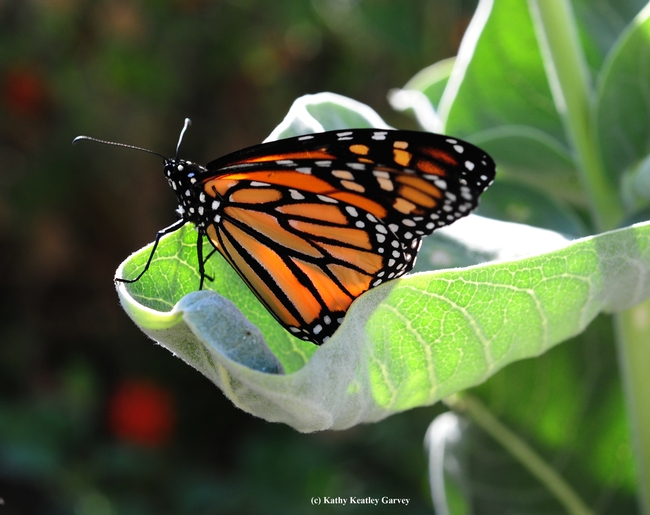
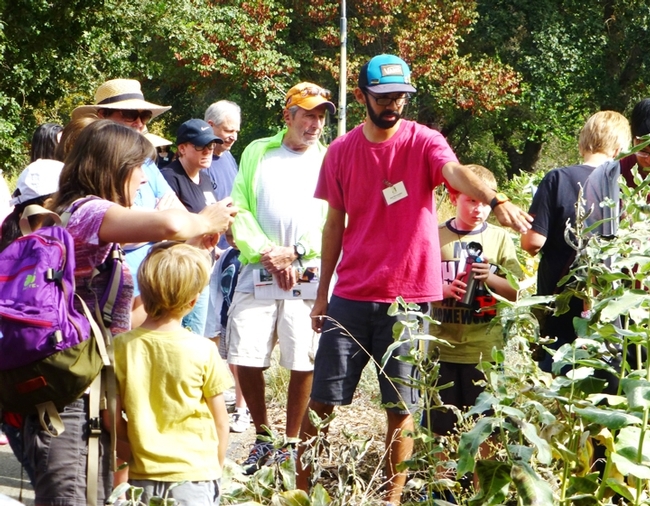
- Author: Kathy Keatley Garvey
What a great idea!
The Horticulture Innovation Lab Demonstration Center on the UC Davis campus is spearheading a "Pitch & Plant Gardening Contest." They're looking for folks to (1) pitch an idea for a raised bed and (2) plant it and nurture it from summer into fall.
The project is geared for the UC Davis community but folks outside the campus can also apply, according to program officer Britta Hansen of the Horticulture Innovation Lab. “I would say that preference will be given to UC Davis students, staff and faulty but we are open to non-affiliated individuals using the space.”
"We're looking for some bright minds and green thumbs to fill the raised beds with interesting plants," she said. "We have four raised beds available, each 8.5 x 4 feet in dimension, ready for up to four ideas. Planting and garden maintenance would be from July 18 up to the end of October."
This is a fast-moving contest, with a pending deadline. So email your 3-slide PowerPoint pitch for what you want to plant by Friday, July 1, to Britta Hansen at bhansen@ucdavis.edu. The rules? Download PDF. Finalists will be asked to pitch their ideas in person the week of July 11-15.
The Horticulture Innovation Lab Demonstration Center currently displays vegetables from Africa and Asia, along with agricultural tools that small-scale farmers use in other countries. The location is at http://campusmap.ucdavis.edu/?l=860
Meanwhile, they offer a potpourri of ideas. Would you…
- plant a salsa garden?
- grow eggplants in all shapes and sizes?
- compare chili peppers to find the spiciest?
- test different types of mulch for keeping soil moist?
An added incentive: the demonstration center will provide materials, including seeds from their collection (or they may purchase them for you) and basic gardening tools.
Note that this isn't an income-producing plot. You won't get paid but you'll have the pleasure of planting and tending your own little garden, your very own Happy Place. And you can take home or consume what you grow. Estimated time required per week? Two to five hours.
Hmm…I wonder how many suggestions might include planting squash, cucumber and other cucurbits? Those would not only yield nutritious vegetables but attract the squash bees and other pollinators. And the Mexican sunflower (Tithonia) would be a good draw for bees, butterflies and other insects.
Plant it and they will come.
Related Links:
What's Growing blog update | About the Horticulture Innovation Lab Demonstration Center | Find it on the campus map | Contest flier PDF
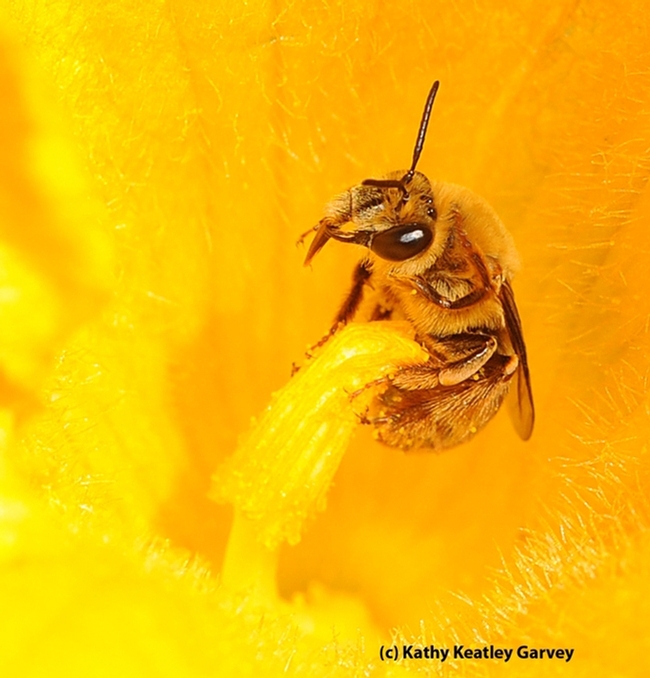
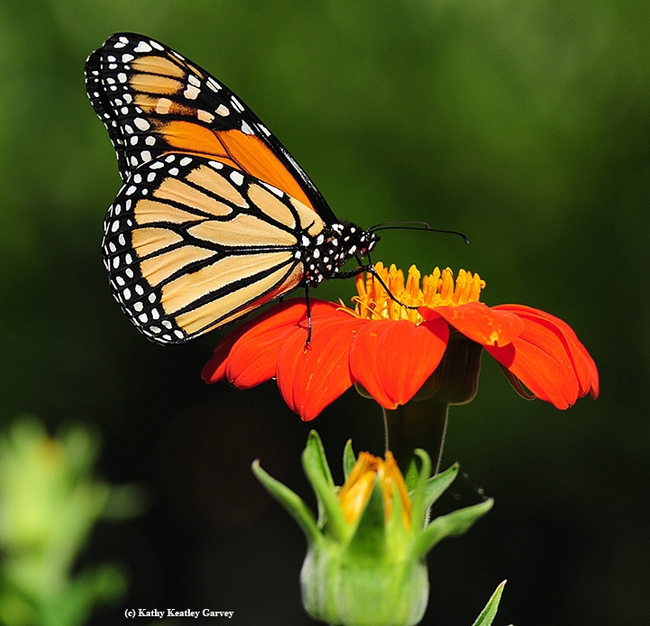
- Author: Kathy Keatley Garvey

The garden that bears her name in the UC Davis Arboretum is Nature at its Best, especially this time of year.
It's better known as the Storer Garden, but a plaque spells out the entire name, "Dr. Ruth Risdon Storer Garden."
It was dedicated to her on her 92nd birthday, on Feb. 25, 1980.
Who was she?
- The first woman physician on the UC Davis campus
- The first woman pediatrician practicing in Yolo County
- A dedicated member of the Friends of the Arboretum
- An alumnus of the University of California
- The wife of Tracy Irwin Storer, a UC alumnus and founding chair of the UC Davis Department of Zoology. Storer Hall is named for him.
- A philanthropist: she and her husband founded the Storer Endowment in Life Sciences.
The plaque also points out that she was "well known for her own beautiful garden and generously sharing their beauty and her knowledge."
Today is Friday of National Pollinator Week. At noon, we headed over to the Storer Garden on Garrod Drive. A graceful and generous lavender butterfly bush--reminiscent of Dr. Storer--was accepting all visitors: six-legged Western tiger swallowtails, monarchs, painted ladies, cabbage whites, honey bees, carpenter bees, bumble bees and assorted two-legged visitors. No reservations needed.
The showy Western tiger swallowtail (Papilio rutulus) fluttered, floated, sailed and soared. Her brilliant colors--yellow and black with a splash of blue--lit up the garden. No sun needed--not with the glorious colors of the Western tiger swallowtail around.



- Author: Kathy Keatley Garvey
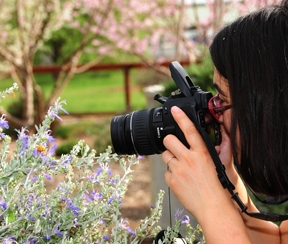
They go together like honey bees on bee balm and bumble bees on tomatoes.
When you attend the 102nd annual campuswide UC Davis Picnic Day on Saturday, April 16, be sure to head over to Briggs Hall, Kleiber Hall Drive, to see the Pollinator Pavilion, which will emphasize the importance of pollinators in both natural environments and food production.
"It is often said that one in every three bites of food we take is dependent on animal pollination," said Pavilion Pollinator coordinator Margaret "Rei" Scampavia, a doctoral candidate in entomology. "While there are some foods that do not rely on animal pollination, many of the tastiest and most nutritious food does. To this end, we have a series of posters demonstrating what a meal might look like with and without foods that benefit from animal pollination."
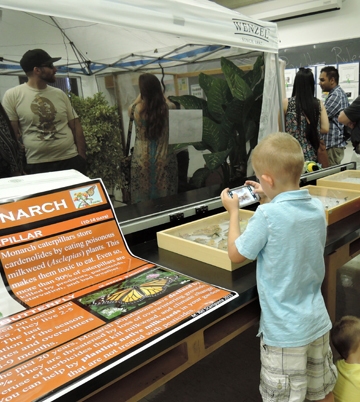
"We are going to have a series of exhibits showcasing pollinator diversity, demonstrating their importance in natural ecosystems and food production, and providing information on what members of the general public can do to help native pollinators," Scampavia said.
"We will have information on a wide variety of animal pollinators, including butterflies, flies, wasps, birds, and even bats. But the majority of the exhibit will focus on the most abundant pollinators: native bees."
The highlight is the walk-in Pollinator Pavillion, an enclosure where visitors can "safely view live pollinators, such as bees, butterflies and flies, up close and in person," the entomologist said. "Younger guests can practice scientific observation by filling out specially provided data sheets. Some of the species present will include: blue orchard bees, Monarch butterflies, Red Admiral butterflies, and Painted Lady butterflies."
Scampavia points out that the European honey bee "is the first thing many people think of when they hear the word pollinator. But in reality, this species is only one of tens of thousands of pollinator species; there are more than 20,000 species of bee besides the honeybee, for example. We hope that visitors to this exhibit will leave with a greater appreciation of the amazingly diverse animals that pollinate flowers."
Last year scores of enthusiastic visitors packed the Pollinator Pavilion. It proved to be one of the most popular, well-crafted, well-designed Picnic Day displays. Another eagerly anticipated event awaits Saturday.
And now there's an urgency.
"Many pollinator species are experiencing alarming declines," Scampavia said. "Monarch butterflies, for example, have declined by over 90 percent in the past ten years. To promote awareness of the plight of the Monarch, we have a series of exhibits with live caterpillars, chrysalises, and adults, which also contain important information about this species and what we can do to prevent further losses. There will also be information about ways to enhance outdoor spaces to promote and sustain healthy wild, native pollinators."


- Author: Kathy Keatley Garvey
We're not the only ones "celebrating" the first week of spring. The oleander aphids are doing a happy dance on our milkweed plants. We think they're doing a mixture of the tango, cha-cha-cha, salsa and merengue. Every time we walk past them, we see a population explosion with even more incredible dance moves. In population size, they went from a family reunion to an army of aphids to an international conference. Y'all come.
These are yellow, pear-shaped insects, about 1.5 to 2.6mm long, with black cornicles. They congregate on the tender young shoots and suck the very life out of them.
Now it's our job to suck the very life out of the aphids before the monarch butterflies return. There are many ways to do this. We sometimes pick them off, squishing them between our fingers. Or we invite lady beetles (aka ladybugs) and soldier beetles to pick them off--but sometimes they're not around to accept our invitations.
Actually we prefer to wash their mouths out with soap. Fill a spray bottle with a gallon of water, add a teaspoon of liquid dishwasher and spray away. The aphids are goners. Some folks add a pinch of cayenne pepper for good measure. Probably makes them more lively when they dance the salsa?
Today when we checked our milkweeds, the population had dwindled down to one aphid. Just one. A one-delegate conference with no flashy moves. It takes two to tango.
Related Links:
For information on how to control aphids, check out the UC Statewide Integrated Pest Management Program's website.
For information on rearing monarchs, including recommended ways to rid your milkweed of those pesky aphids, these Facebook pages are quite helpful:
The Beautiful Monarch
Public group administered by Holli Webb Hearn
"The Beautiful Monarch group was created to teach members how to raise and properly care for the monarch butterfly from egg to flying adult along with learning about their predators, diseases and other monarch facts. It is my hope that as a collective group we will help and teach one another along with any new members that join us."
Raising Butterflies and Moths for Conservation (+All Pollinators)
Closed group monitored by Mona L. Miller (apply to join)
"Our focus is the preservation and protection of North American butterflies, moths and pollinators, particularly the Monarch Butterfly.")




